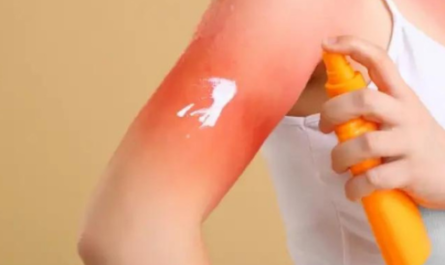1. Introduction to Carpal Tunnel Syndrome
Carpal tunnel syndrome is a common condition caused by pressure on the median nerve in the wrist. This pressure can lead to pain, numbness, and tingling in the hand and fingers, often necessitating surgical intervention for relief.
2. Understanding Carpal Tunnel Surgery
Carpal tunnel surgery involves cutting the ligament pressing on the median nerve to alleviate symptoms. This procedure is typically performed on an outpatient basis and aims to reduce pain and restore hand function.
3. The Importance of Post-Surgery Care
Proper post-surgery care is crucial for a successful recovery from carpal tunnel surgery. This includes following your surgeon’s instructions, taking prescribed medications, and protecting your wrist with a bandage or splint.
4. Purpose of a Carpal Tunnel Bandage
A carpal tunnel bandage is used after surgery to support the wrist, reduce swelling, and protect the surgical site. It helps to keep the wrist in a neutral position, promoting healing and minimizing discomfort.
5. Types of Bandages Used After Surgery
There are various types of bandages used after carpal tunnel surgery, including elastic bandages, adhesive bandages, and custom-made splints. Your surgeon will recommend the most suitable option based on your specific needs.
6. How to Properly Apply a Bandage
Proper application of a bandage involves wrapping it snugly but not too tightly around the wrist. It should provide support without cutting off circulation. Follow your surgeon’s instructions or seek assistance from a healthcare professional if unsure.
7. Managing Pain with a Bandage
A bandage can help manage pain by immobilizing the wrist and reducing movement that could aggravate the surgical site. Combined with prescribed pain medications, it plays a vital role in pain management post-surgery.
8. Reducing Swelling with a Bandage
Swelling is a common post-surgery issue. A properly applied bandage can help reduce swelling by providing gentle compression and keeping the wrist elevated, which encourages fluid drainage away from the surgical site.
9. How Long to Wear a Bandage After Surgery
The duration for wearing a bandage after carpal tunnel surgery varies. Typically, patients wear a bandage or splint for one to two weeks. Your surgeon will provide specific guidance based on your healing progress.
10. Cleaning and Maintaining Your Bandage
Keeping your bandage clean is essential to prevent infection. Follow your surgeon’s advice on how to clean it, which may involve gently wiping the bandage or replacing it with a fresh one as needed.
11. Signs of Complications with Your Bandage
Watch for signs of complications, such as increased pain, redness, swelling, or discharge from the surgical site. If you experience these symptoms, contact your healthcare provider promptly for advice.
12. Adjusting Your Bandage for Comfort
If your bandage feels too tight or too loose, it’s important to adjust it for comfort. A too-tight bandage can restrict blood flow, while a too-loose bandage may not provide adequate support. Consult your surgeon if adjustments are needed.
13. When to Remove Your Bandage
Your surgeon will give you specific instructions on when to remove your bandage. Typically, it is removed during a follow-up visit where the surgical site is checked for proper healing and any necessary adjustments are made.
14. Physical Therapy After Bandage Removal
Physical therapy is often recommended after bandage removal to restore strength and flexibility to the wrist. A therapist will guide you through exercises designed to improve mobility and reduce stiffness.
15. The Role of Splints in Recovery
In some cases, a splint may be used instead of, or in addition to, a bandage. Splints provide more rigid support and are particularly useful in the early stages of recovery to prevent excessive movement.
16. Comparing Bandages and Splints
Bandages and splints serve different purposes. Bandages offer flexible support and compression, while splints provide rigid immobilization. Your surgeon will recommend the best option based on your specific recovery needs.
17. Living with a Bandage: Daily Activities
Wearing a bandage can affect daily activities. Tasks such as typing, driving, and household chores may need to be modified. Follow your surgeon’s guidelines to avoid straining your wrist during recovery.
18. Sleeping with a Bandage
Sleeping with a bandage can be challenging. Ensure your wrist is comfortably supported and avoid positions that place pressure on the wrist. Elevating the wrist on a pillow can also help reduce swelling overnight.
19. Resuming Work After Surgery
The timeline for returning to work varies depending on the nature of your job and the extent of your surgery. Light duties may be resumed within a few weeks, but more physically demanding tasks might require a longer recovery period.
20. Impact of Bandages on Sports and Exercise
Engaging in sports and exercise may be limited while wearing a bandage. Low-impact activities like walking are generally safe, but consult your surgeon before resuming more strenuous activities to avoid re-injury.
21. Monitoring Your Recovery Progress
Regular follow-up appointments with your surgeon are essential to monitor your recovery progress. These visits allow your doctor to assess healing, adjust your bandage or splint, and recommend further treatment if needed.
22. Psychological Aspects of Recovery
Recovering from carpal tunnel surgery can be mentally challenging. It’s normal to feel frustrated or anxious. Seek support from friends, family, or a counselor to help cope with these emotions during your recovery.
23. Success Stories and Recovery Tips
ear specialist singapore from others who have successfully recovered from carpal tunnel surgery can be encouraging. They can offer practical tips and insights on managing recovery, from dealing with bandages to resuming normal activities.
24. Long-Term Care for Your Wrist
Long-term care for your wrist includes continuing exercises to maintain strength and flexibility, avoiding repetitive strain, and using ergonomic tools. Regular check-ups ensure your wrist remains healthy and functional.
25. Final Thoughts on Carpal Tunnel Bandages
Using a carpal tunnel bandage after surgery is a critical part of the recovery process. Proper application, care, and adherence to your surgeon’s instructions can significantly enhance healing and ensure a successful outcome. Always communicate with your healthcare provider about any concerns to facilitate the best possible recovery.



